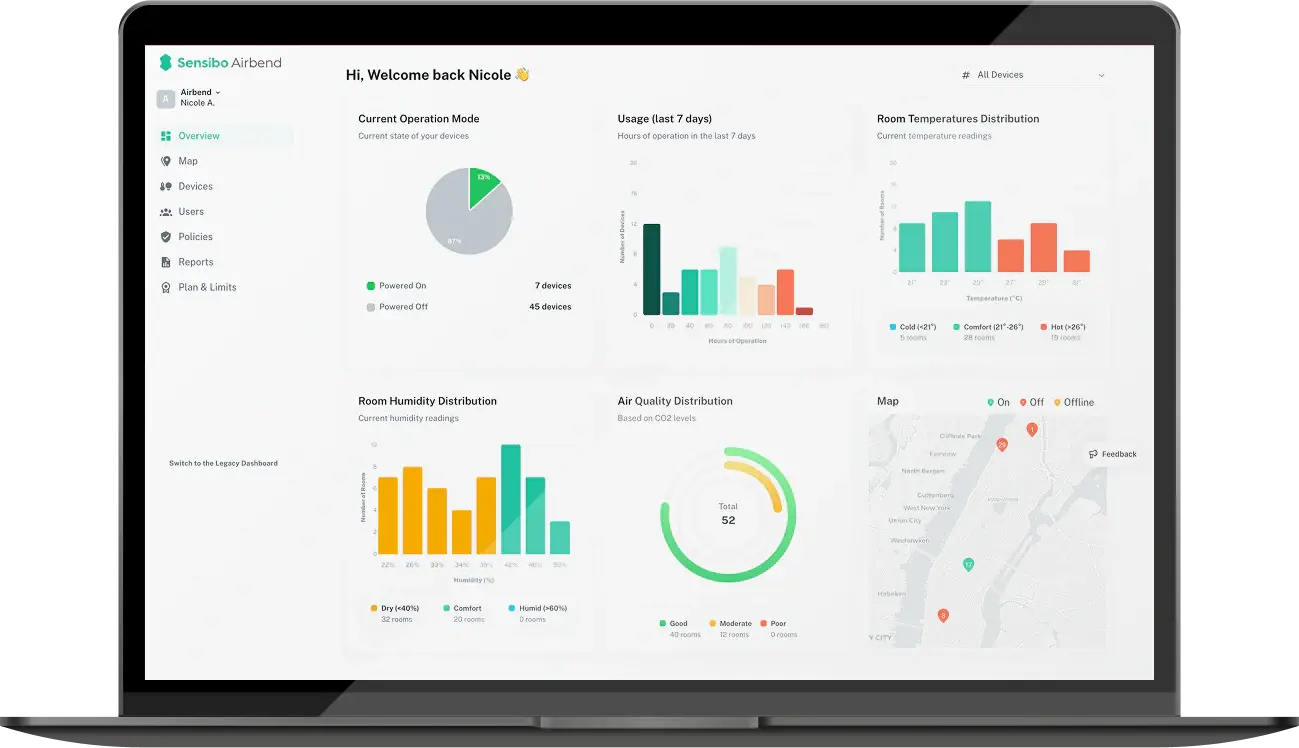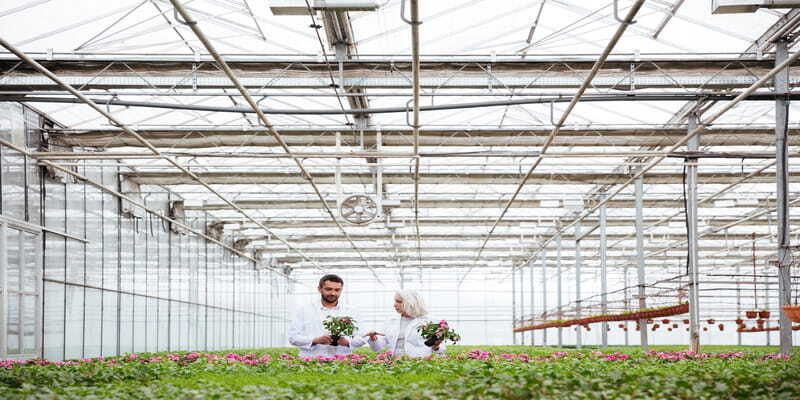How to Effectively Heat a Greenhouse in Winter: Tips and Solutions
Key Takeaways
- Smart thermostat controls slash greenhouse heating costs by 15-25% through precise temperature management and automated scheduling
- Pairing proper insulation with efficient heating systems maximizes energy conservation and plant protection
- Different plant varieties need specific temperature ranges, making zone control valuable for mixed growing environments
- Automated heating systems prevent expensive plant loss from sudden temperature drops and eliminate manual monitoring
- Strategic heating placement and thermal mass storage boost overall system efficiency while cutting energy waste
When it comes to growing strong, healthy plants throughout the year, climate control in your greenhouse isn’t just a luxury – it’s a necessity. While sunlight might do the heavy lifting during the day, keeping that precious heat from vanishing after sunset is a real challenge.
If you’ve ever stepped into your greenhouse on a chilly morning only to find it barely warmer than the outside air, you already know the struggle. Despite all the effort you put into insulation and setup, your greenhouse might be bleeding heat – and fast.
In this post, we’ll explore exactly how and why greenhouses lose heat, break down simple math to calculate your heating needs, and take a close look at different heating methods, including electric and gas options. We’ll also dive into smart thermostat systems, safe installation practices, and affordable efficiency upgrades that can dramatically improve your greenhouse’s performance.
Whether you’re growing tomatoes in Minnesota or orchids in Texas, understanding where your heat goes – and how to keep it in – is the first step to creating a more stable, productive growing environment all year round.
Why Your Greenhouse Bleeds Heat
Picture this: your greenhouse soaks up sunshine all day like a solar oven. Plants love it. Then sunset hits. Suddenly that same glass structure becomes a giant heat radiator, dumping every bit of warmth straight into the frigid air outside.
Heat disappears three ways from your greenhouse. First, it conducts right through the glass or plastic walls - think of touching a cold window on a winter day. Second, it sneaks out through every tiny crack around doors and vents. Third, it radiates upward to the cold night sky like heat rising from hot pavement.
Here's the math that matters: multiply your greenhouse square footage by how many degrees you want to raise the temperature, then multiply that by 1.0 for a tight greenhouse or 1.5 for a leaky one. A 10x12 foot greenhouse (120 square feet) that you want to keep 40 degrees warmer than outside needs about 4,800 to 7,200 BTUs per hour. Sounds complicated? It's not. Most heating calculators online do this math for you.
Your local weather makes all the difference. Minnesota growers need heaters running from October through April. Texas gardeners might fire up heat three nights all winter. Wind matters too - a greenhouse on a hilltop needs more heating than one tucked behind a barn.
Picking Your Heating Weapon
Walk into any garden center and you'll see dozens of heaters promising to solve your problems. Most are junk. Here's what actually works.
Electric Heat
Electric heaters are like the Swiss Army knives of greenhouse heating. Fan heaters blow warm air around fast and work great with thermostats. Oil-filled radiators heat gently without turning your plants into jerky. Heating mats warm soil from below - perfect for starting seeds when it's snowing outside.
The beauty of electric? Plug it in and forget about it. No fumes, no fuel deliveries, no carbon monoxide scares. The downside? Your electric bill. In most places, electricity costs two to three times more per BTU than natural gas.
Gas Heat
Natural gas heaters pack serious punch for the money. Hook one up to your house's gas line and you've got unlimited fuel at rock-bottom prices. Propane works the same way but comes in tanks you swap out every few weeks.
Both types pump out carbon dioxide while they burn. Plants actually love this - it's like giving them extra vitamins. Just crack a vent to keep fresh air moving or you'll end up with a jungle that smells like a swamp.
Quick Heat Comparison:
- Cheapest to run: Natural gas
- Easiest to control: Electric with thermostat
- Most flexible: Propane tanks
- Greenest option: Solar (if you can afford it)
- Best bang for buck: Natural gas fan heater
Smart Controls Save Your Bacon
Remember those old thermostats that clicked on and off like a metronome? Forget them. Modern greenhouse heater with thermostat setups think for themselves and save you money while they're at it.
Basic programmable thermostats let you set different temperatures for day and night. Plants actually prefer cooler nights - it mimics what they'd get in nature and keeps them healthier. Set it for 65°F during the day and 50°F at night, then forget about it.
Smart thermostats take this further. They check weather forecasts and pre-heat before cold fronts hit. They learn your patterns and adjust automatically. Some connect to your phone so you can check temperatures from bed or change settings from vacation.
Zone control splits big greenhouses into separate heating areas. Grow orchids in one warm section while lettuce hangs out in the cooler zone. Multi-zone heating can cut your bills in half by only warming the spaces you're actually using.
The fanciest systems use sensors everywhere - air temperature, soil warmth, leaf temperature, humidity. Sounds like overkill until your first perfect tomato harvest in February. Then you become a believer.
Your phone becomes your greenhouse's best friend with remote monitoring. Get alerts when temperatures spike or drop. Know when equipment fails before your plants do. Track exactly how much each efficiency upgrade saves you.

Where to Put the Heat
Stick a heater in the wrong spot and you'll cook some plants while others freeze. Hot air rises, so mount heaters low enough that warm air reaches your plants before floating to the ceiling. One heater in the center works for small greenhouses. Bigger spaces need multiple smaller units spread around.
Keep heaters away from water - electricity and moisture don't mix. Gas heaters need breathing room from anything that burns. Never put any heater directly under plants unless you want crispy lettuce.
Don't Forget Safety:
- Carbon monoxide detectors for gas heaters (seriously, don't skip this)
- Proper electrical connections for electric units
- Clear space around all heaters per the manual
- Easy-to-reach shut-off switches
- Monthly safety checks during heating season
Electric heaters are usually DIY-friendly if you can wire a light switch. Gas heaters almost always need professional installation. Don't cheap out here - a properly installed system pays for itself by not burning your greenhouse down.
Stop the Heat From Escaping
The best heater in the world won't help if heat pours out faster than you can make it. Start with the cheap fixes that deliver big results.
Bubble wrap made for greenhouses (not the stuff from Amazon packages) cuts heat loss by half while barely dimming the light. The greenhouse-specific stuff resists UV damage and has bigger bubbles that insulate better. Regular bubble wrap turns yellow and falls apart after one season.
Thermal mass stores free solar heat during the day and gives it back at night. Black water barrels in sunny spots work like cheap batteries for heat. Concrete paths, stone walls, or even jugs of water all help stabilize temperatures naturally.
Air leaks kill your heating budget. Walk around with a candle on a windy day and you'll see where heat escapes. Caulk the cracks, weatherstrip the doors, and seal loose glazing panels. Five dollars of caulk often saves more energy than a $500 heater upgrade.
Double-wall polycarbonate glazing insulates much better than single glass but costs real money. Figure three to five years to pay back the investment through lower heating bills.
Fix These First:
- Seal air leaks around doors and vents
- Add bubble wrap to north walls
- Install thermal mass for heat storage
- Upgrade glazing if budget allows
- Add thermal curtains for brutal cold
When Things Go Wrong
Temperature swings drive plants crazy and waste energy. Hot spots near heaters, cold corners, and everything in between. Fix uneven heating by adding circulation fans, moving heaters around, or splitting the load between multiple smaller units.
Gas heaters pump moisture into the air along with heat. Too much humidity invites mold, fungus, and plant diseases. Crack some vents even when heating to keep air moving. In really humid climates, you might need a dehumidifier too.
Greenhouse heater with thermostat accuracy matters more than you'd think. A thermostat that's off by five degrees wastes energy and stresses plants. Check it against a separate thermometer at plant level. Many can be recalibrated or moved to a better location.
Murphy's Law says heaters fail during the worst possible weather. Keep backup plans ready: battery thermometers with alarms, portable heaters, extra insulation materials, even emergency plant covers. A $30 backup thermometer can save a $300 crop.
Regular maintenance prevents most problems. Clean or replace filters monthly during heating season. Check gas connections every year. Test safety systems before you need them. Spending an hour on maintenance beats spending a day replacing dead plants.

Next Steps
Greenhouse heating boils down to three things: stop heat from escaping, add heat efficiently, and control everything precisely. Start with the cheapest improvements - seal air leaks and add insulation - before buying expensive heaters. A roll of bubble wrap and some caulk often save more money than a heater upgrade.
Modern controls have transformed greenhouse heating from constant worry into set-it-and-forget-it convenience. Programmable thermostats eliminate guesswork while smart controls optimize everything automatically. These systems pay for themselves through lower bills and better plant performance.
Your perfect heating setup depends on your climate, greenhouse size, and what you're growing. Electric works great for automated systems, gas delivers cheap heat for bigger spaces, and mixing different approaches often works best. Start simple, see what works, and build up your system over time.
FAQ
What's the ideal temperature range for most greenhouse plants in winter?
Most greenhouse plants thrive between 45-55°F (7-13°C) at night and 60-70°F (15-21°C) during the day. Tropical plants may require higher temperatures around 65-75°F (18-24°C) consistently.
How much can a smart thermostat really save on greenhouse heating costs?
Smart thermostats with precise temperature control can reduce heating costs by 15-25% through automated scheduling, zone control, and eliminating temperature overshooting.
Is electric or gas heating more cost-effective for greenhouses?
Natural gas is typically cheapest per BTU, followed by propane, then electricity. However, electric heating offers easier automation, better safety, and no ventilation requirements.
How do I calculate the right heater size for my greenhouse?
Use the formula: BTUs needed = greenhouse square footage × desired temperature increase × insulation factor (1.0-1.5). A 10x12 greenhouse typically needs 8,000-15,000 BTUs.
Can I heat just part of my greenhouse to save money?
Yes, creating zones with plastic sheeting or thermal curtains allows you to heat only the area with plants, potentially cutting costs by 30-50%.
What's the biggest mistake people make with greenhouse heating?
Over-heating is the most common error, wasting energy and potentially harming plants. Installing a quality thermostat prevents this costly mistake.



































.jpg?height=200&name=photo_2025-01-17_20-41-40%20(1).jpg)
.jpg?height=200&name=2150104970%20(1).jpg)
.jpg?height=200&name=photo_2025-01-03_19-24-38%20(1).jpg)
%20(1)%20(1)-min-1.jpg?height=200&name=image%20(60)%20(1)%20(1)-min-1.jpg)


